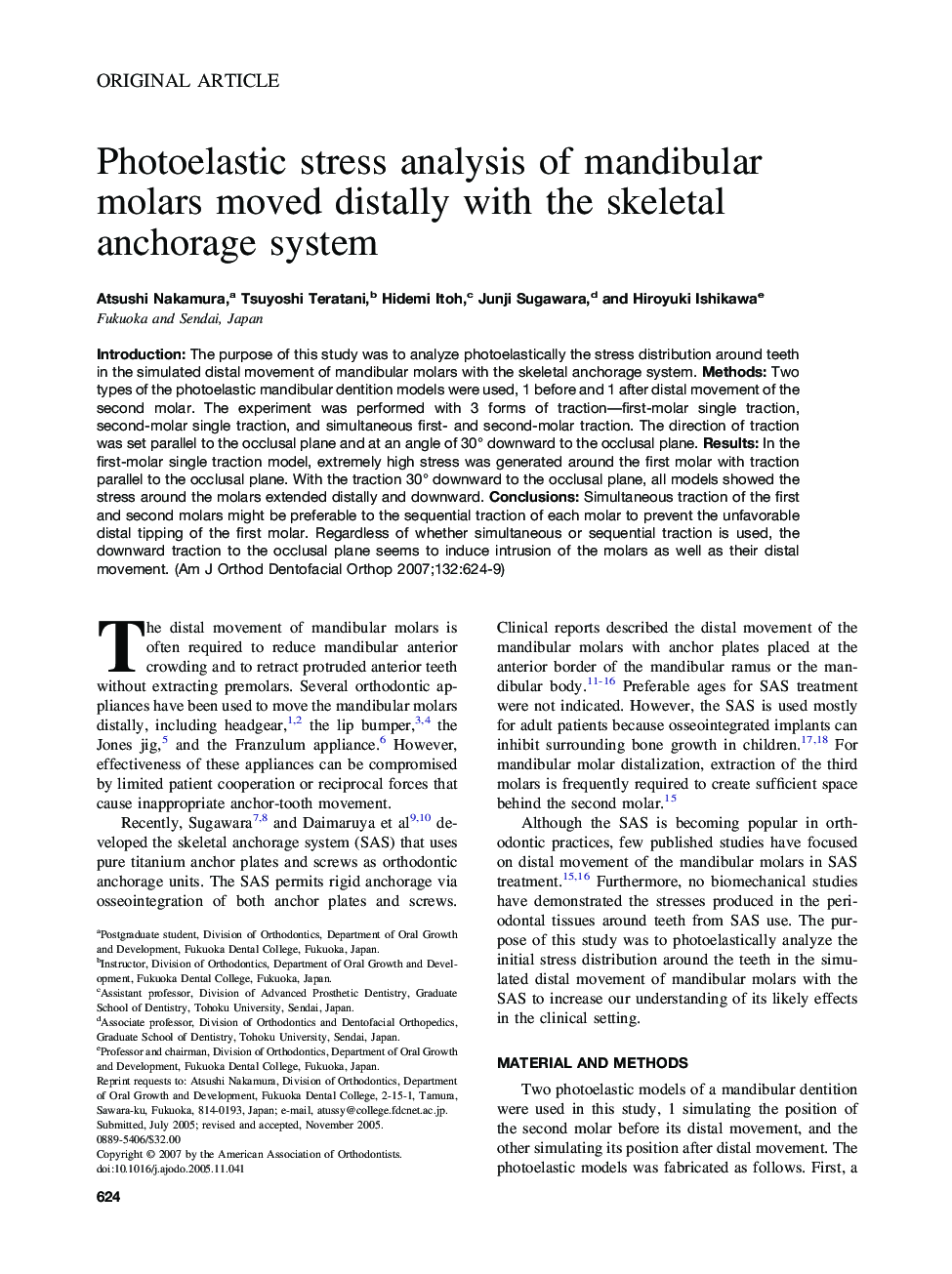| Article ID | Journal | Published Year | Pages | File Type |
|---|---|---|---|---|
| 3119669 | American Journal of Orthodontics and Dentofacial Orthopedics | 2007 | 6 Pages |
Introduction: The purpose of this study was to analyze photoelastically the stress distribution around teeth in the simulated distal movement of mandibular molars with the skeletal anchorage system. Methods: Two types of the photoelastic mandibular dentition models were used, 1 before and 1 after distal movement of the second molar. The experiment was performed with 3 forms of traction—first-molar single traction, second-molar single traction, and simultaneous first- and second-molar traction. The direction of traction was set parallel to the occlusal plane and at an angle of 30° downward to the occlusal plane. Results: In the first-molar single traction model, extremely high stress was generated around the first molar with traction parallel to the occlusal plane. With the traction 30° downward to the occlusal plane, all models showed the stress around the molars extended distally and downward. Conclusions: Simultaneous traction of the first and second molars might be preferable to the sequential traction of each molar to prevent the unfavorable distal tipping of the first molar. Regardless of whether simultaneous or sequential traction is used, the downward traction to the occlusal plane seems to induce intrusion of the molars as well as their distal movement.
